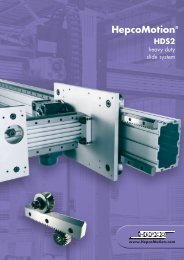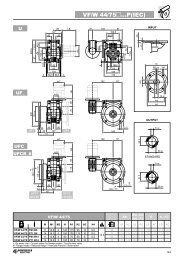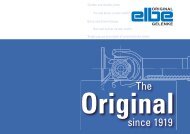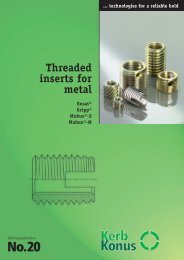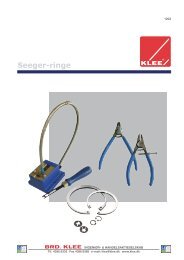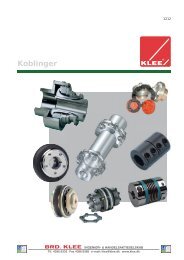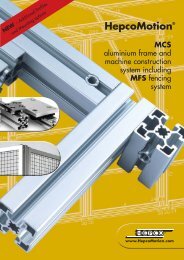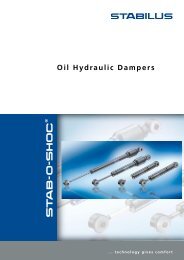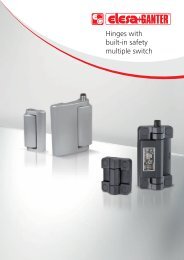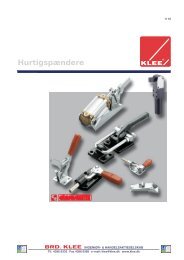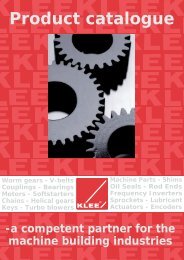LINEAR MOTION SOLUTIONS - Brd. Klee A/S
LINEAR MOTION SOLUTIONS - Brd. Klee A/S
LINEAR MOTION SOLUTIONS - Brd. Klee A/S
Create successful ePaper yourself
Turn your PDF publications into a flip-book with our unique Google optimized e-Paper software.
Transfer Process<br />
Technical Information<br />
TRANSFER PROCESS OF LINER TO SHAFT<br />
Technical Information<br />
®<br />
FRELON<br />
TRANSFER PROCESS<br />
Before<br />
After<br />
The interaction of the Frelon ® material and the shafting creates<br />
a natural, microscopic transfer of the Frelon to the running<br />
surface. A thin film is deposited on the shaft, and the valleys<br />
in the surface finish are filled in with Frelon material during<br />
the initial break-in period. This transfer creates the selflubricating<br />
condition of Frelon riding on Frelon.<br />
This break-in period will vary depending on several criteria:<br />
1. Preparation of the shafting prior to installation - it is best to<br />
clean the shafting with a 3-in-1 type oil before installing the<br />
bearings. This ensures that the surface will receive a full<br />
transfer of material.<br />
Shaft<br />
Shaft<br />
NOTE: At break-in, Frelon deposits a microscopic film<br />
on the shaft and fills the valleys in the surface<br />
finish creating a Frelon-on-Frelon running condition<br />
that is true self-lubrication.<br />
2. Speed, load, and length of stroke specific to the application<br />
- typically the initial transfer process will take approximately<br />
50-100 strokes of continuous operation. The running<br />
clearance on the bearing will increase an average of .0002"<br />
to .0005", depending on the length of the stroke and<br />
surface requiring the transfer.<br />
3. How often the shafting is cleaned - if the shafting is cleaned<br />
regularly, increased wear will be seen in the bearings. This<br />
is due to the transfer process being performed over and<br />
over again.<br />
CAUTION: Do not repeatedly clean the shafting with alcohol!<br />
This will remove the previously transferred material entirely<br />
and increase the wear to the bearing liner.<br />
RECOMMENDED<br />
LUBRICATION<br />
• Waylube Oil<br />
• Light Weight Oils<br />
• Petroleum Based Grease<br />
• 3-in-1 oils<br />
NOT<br />
RECOMMENDED<br />
• WD-40<br />
• PTFE Sprays<br />
• Fluorocarbons<br />
• Silicon Oils, Grease<br />
or Spray<br />
LUBRICATION<br />
• Reduce friction up to 50%.<br />
• Minimize wear of liner.<br />
• Reduce heat buildup allowing greater speeds. Actual speeds<br />
achieved are dependent on type of lubricant and frequency<br />
of application.<br />
• Aid in cleaning the shafting for a proper transfer process.<br />
A minimum of initial lubrication of Simplicity bearings is<br />
strongly recommended.<br />
WD40 ® is a registered trademark of the WD40 company<br />
46<br />
800.962.8979 • www.pbclinear.com



